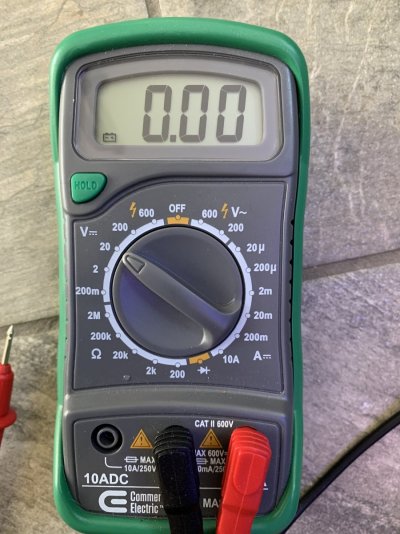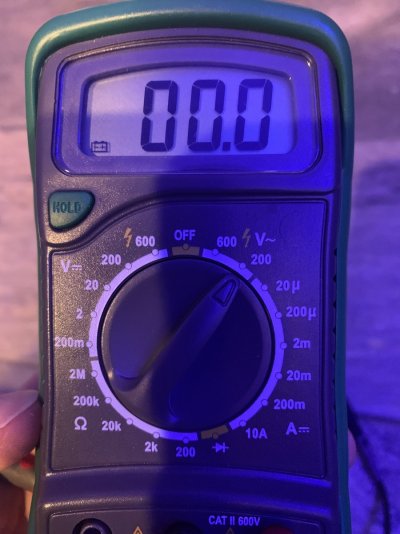I noticed my tang is showing signs of HLLE. I did run carbon almost constant until 2 weeks ago when I noticed the tang. Water parameters are ppretty good. (0 nitrate, 0 phosphate, 8.3 ph, calcium 450, alk 10).
I checked for stray voltage and found .30 on my meter when set like in picture. I just dont know exactly bow to read this or if I have it set correctly. No matter what I turn off in the tank it still reads .30. Will all aquariums read a certain level of stray voltage? Where does .30 stand compared to the norm. Any help would be greatly appreciated. Thank you.

I checked for stray voltage and found .30 on my meter when set like in picture. I just dont know exactly bow to read this or if I have it set correctly. No matter what I turn off in the tank it still reads .30. Will all aquariums read a certain level of stray voltage? Where does .30 stand compared to the norm. Any help would be greatly appreciated. Thank you.



















